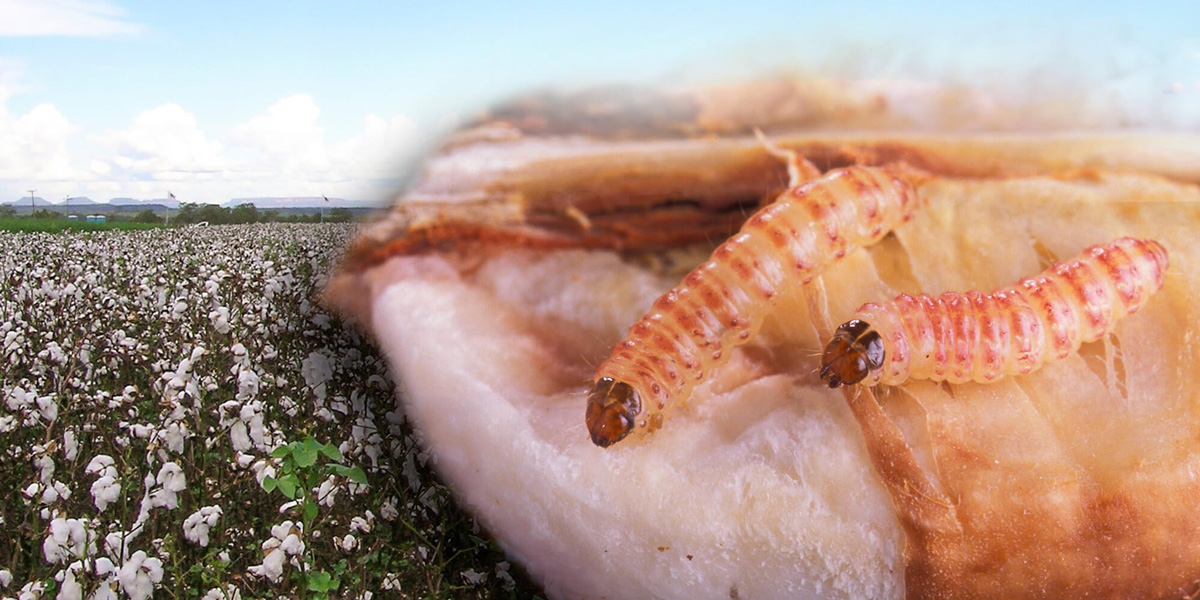
New study shows that the failure of Bt cotton in India has enabled the redistribution of assets from the bottom to the top of the agricultural sector. Report: Claire Robinson and Jonathan Matthews
When Bt cotton was introduced to the market in India, it was not only hailed as a silver bullet in the fight against the key pest affecting cotton production, but promoted by some as a pro-poor technology that would bring substantial benefits to smallholders. But the authors of a new paper present evidence to suggest that Bt cotton can be better understood as a neoliberal technology that has led to a systematic dispossession of the very people it is claimed to help – resource-poor farming households.
Their study, published in the journal Agriculture and Human Values (details below), shows that Bt cotton is built to protect farmers only temporarily from Lepidopteran pests. Data from a representative survey of the three major cotton-growing districts of the state of Telangana in India show that the pink bollworm infestations that have recurred in Bt cotton in recent years are a shock to farmers that have caused severe losses in yield and income.
The authors, who are based at German research institutions, note that the technological design of Bt cotton was flawed from the outset because the evolution of pest resistance was inevitable. In their words, the technology included an “inherent sociobiological obsolescence”. When Bt cotton duly failed, it drove resource-poor farmers into greater debt, forcing them to sell land or equipment and thereby generating dispossession. Due to its short product life cycle, Bt technology involves a built-in risk of farmers getting trapped on a technological treadmill, causing them “to rely on ever-new generations of Bt cotton seeds in response to ever-new resistant pests, with corresponding profits gained by the seed industry”.
There is an obvious parallel here with the technological treadmill farmers have also found themselves on with GMO herbicide-tolerant crops. As the authors note, “The third herbicide-tolerant (HT) generation of Bt cotton technology (Bollgard III) is not (yet) commercialized in India. However, its unauthorized cultivation has recently sparked a major controversy... The risk of resulting herbicide treadmills in this regard was indicated by Stone and Flachs (2017).”
Bt cotton, the authors say, is exactly one of the “techno-managerialist solutions” that policymakers, planners and the industry still favour but which “are bound to an imaginary reductionist technological-fix that has little to do with the experiences of people and the vibrant ecological reality at local levels”.
While resource-poor farmers are the losers with Bt cotton, the authors identify the winners as moneylenders, landlords and large-scale farmers, who “gain from the current biotechnology-driven cotton regime by means of earnings in the form of interest payments and the sale of arable land”. And as a result, these beneficiaries provide support at the local level for the continued promotion and introduction of such crops by seed companies and the biotech industry.
As the authors conclude: “Bt cotton includes an inherent sociobiological obsolescence that results in a systematic dispossession of resource-poor households while providing appropriation opportunities for other actors.” They add that political and social structures “facilitate the accumulation of capital through a redistribution of assets from the bottom to the top of the agricultural sector. Claims that considered Bt cotton as a pro-poor technology were thus flawed from the outset.”
More broadly, they also flag up in their paper that sociobiological obsolescence is “a promising notion for the assessment and evaluation of future biotechnologies that are currently advertised to tackle the calamities associated with global environmental change”.
---
The new study (open access):
Bt cotton, pink bollworm, and the political economy of sociobiological obsolescence: insights from Telangana, India
Katharina Najork, Jonathan Friedrich & Markus Keck
Agriculture and Human Values (2022). Published: 7 February 2022 https://link.springer.com/article/10.1007/s10460-022-10301-w